This post was originally written for Oppositelock, but with the impending death of Kinja user blogs, I’m reposting it here.
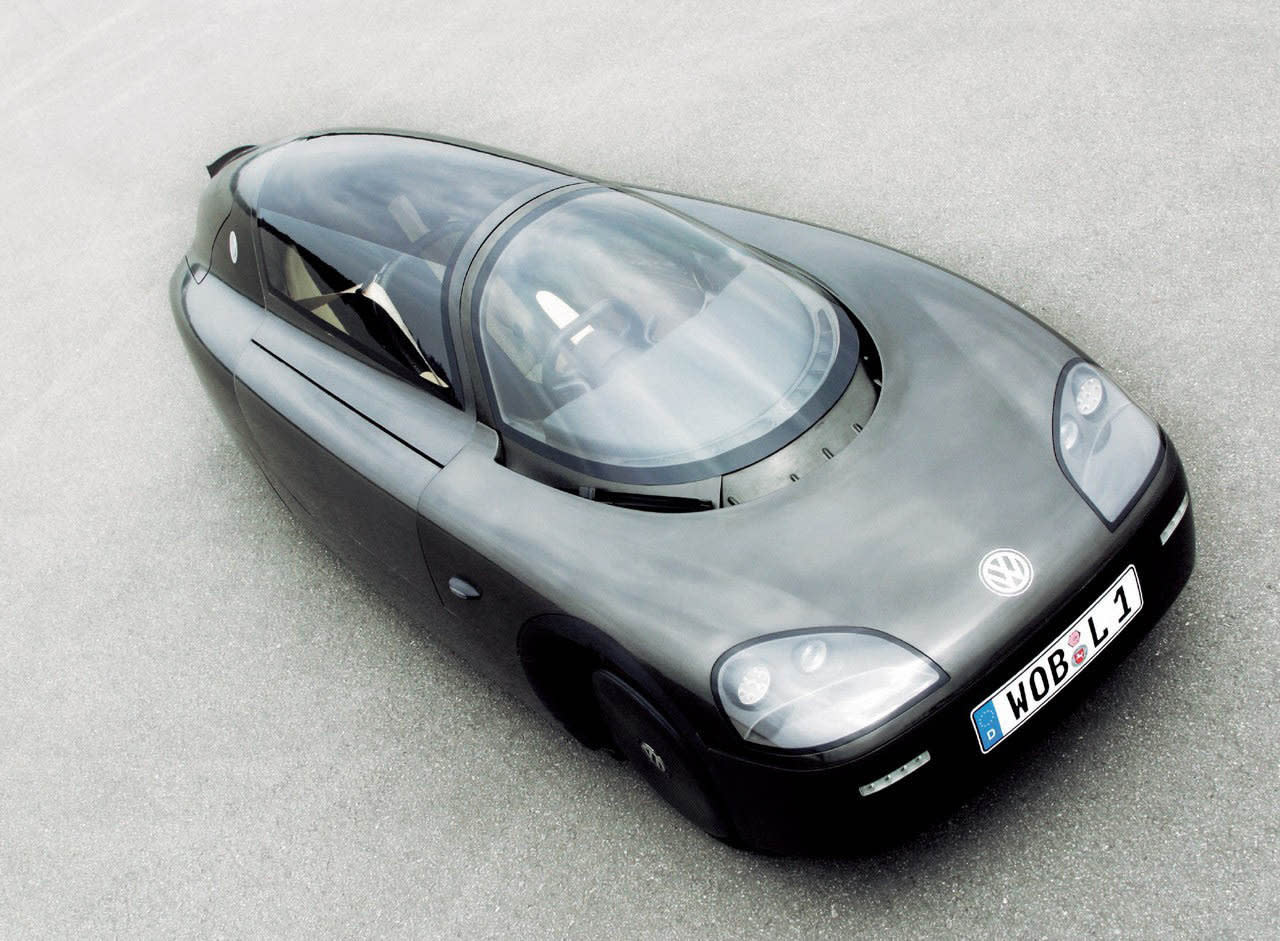
The Volkswagen 1-Liter-Auto concept, from 2002. It was one of Ferdinand Piech’s three projects designed to create a corporate culture of cheating to make the boss happy as halo cars to demonstrate the technical prowess of Volkswagen – the other two being the Phaeton and the Veyron. The Phaeton’s goal was to be the best luxury sedan in the world, the Veyron’s to be the fastest car in the world while still being easy to drive, and the 1-Liter-Auto’s goal was… to consume 1 liter of fuel for every 100 kilometers, or in ‘murrican units, 235 miles per US gallon. And, it had to do this while actually being capable of decent speeds – top speed was 120 km/h, or about 75 mph.
They achieved that goal even with this prototype (which borrows heavy inspiration from the Messerschmitt/FMR microcars), but it would be over a decade before they brought “1 liter car” into production, and they had to cheat to do it (and I don’t just mean the Dieselgate cheats, although it may well have had those as well). This car, as far as I know, didn’t have to cheat.
Aerodynamics
The first, and most obvious thing, is that it had extremely good aerodynamics – Volkswagen actually claimed a Cd of 0.159, and frontal area of 1.0 m2, for a total drag area of 0.159 m2. For comparison with a more normal eco-car, Car and Driver tested a 2014 Prius at 0.26 Cd and 2.22 m2 frontal area, for a total drag area of 0.577 m2 – over 3.6 times the aerodynamic drag. (Yes, the 2016 is lower drag, but I can’t find frontal area figures for it, so…) Of course, some tradeoffs are required to get such low frontal area…
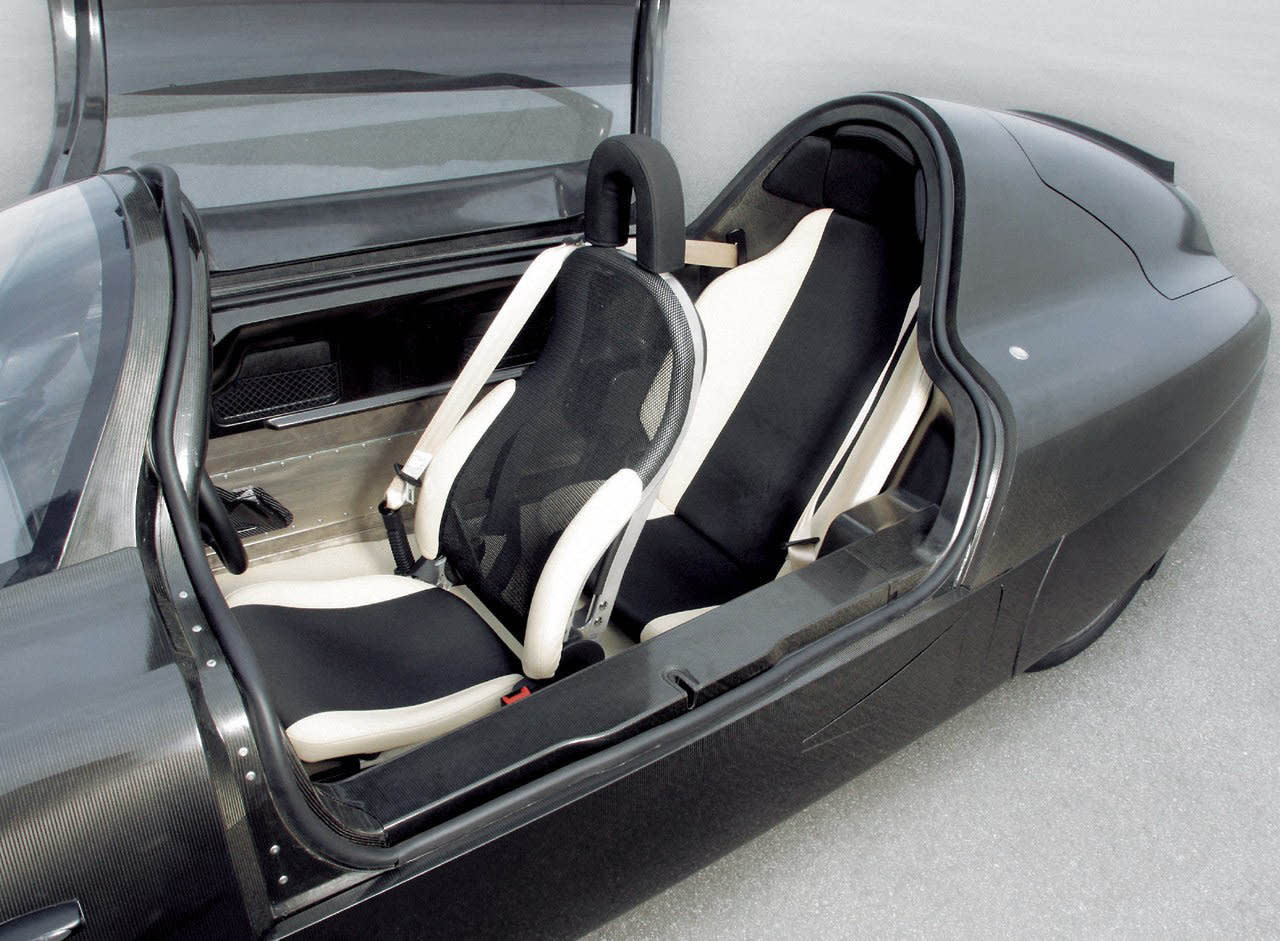
…like tandem seating. Narrow car, requires narrow seating configuration. In addition, it’s about 130 mm, or 5″, lower roof height than a Miata.
However, if you look closer at the seating… it leads into the next thing needed to achieve the 1.0 l/100 km goal.
Weight
This thing is silly light weight. Aerodynamics are important for high speed efficiency, but when accelerating from a stop, or climbing a hill, weight is the real killer. So, Volkswagen decided to just… not have weight. When money is no object, you can do that, you see.
You’ll note the mesh seats, that’s the first obvious sign of extreme lightweighting.
As far as the body, it was a magnesium (aluminum being too heavy, you see) space frame, with a carbon fiber skin. Plenty of titanium and magnesium components are scattered throughout the vehicle, including in the powertrain. Titanium wheel bearings with ceramic balls, carbon fiber wheels, crazy light suspension bits, etc., etc. And, custom (ultra-narrow, of course) tires, which also helped reduce rolling resistance.
The result? It weighs 290 kg, or about 639 lbs.
Powertrain
Now this is where things get a bit interesting. It’s got an 8.5 hp, 300 cc, single-cylinder direct injection, naturally aspirated, DOHC diesel engine. Aluminum block, titanium connecting rod. I saw a video a few years ago, in which this thing was actually driving, and… it sounds exactly like you’d think a diesel thumper would. However, the goal here is extreme efficiency.
The transmission is a 6-speed automated single-clutch gearbox. Nothing to write home about, except for the extreme light weight, and some things Volkswagen hid in the press release – the thing’s a mild hybrid! Volkswagen had actually been working on very similar hybrid technology (and calling it that) since the 1980s (and that technology came to fruition in the 2010s), but they didn’t even admit that this was a hybrid, unless you read between the lines.
The entire powertrain – engine, fluids, sandwich hybrid motor, and gearbox – weighs 61 kg, or about 134 lbs.
What came of it
In 2009, Volkswagen showed the L1 Concept, a somewhat closer to production version of the 1-Liter’s ideas, adapted to the Mk6 Golf-era design language that Volkswagen was moving to:
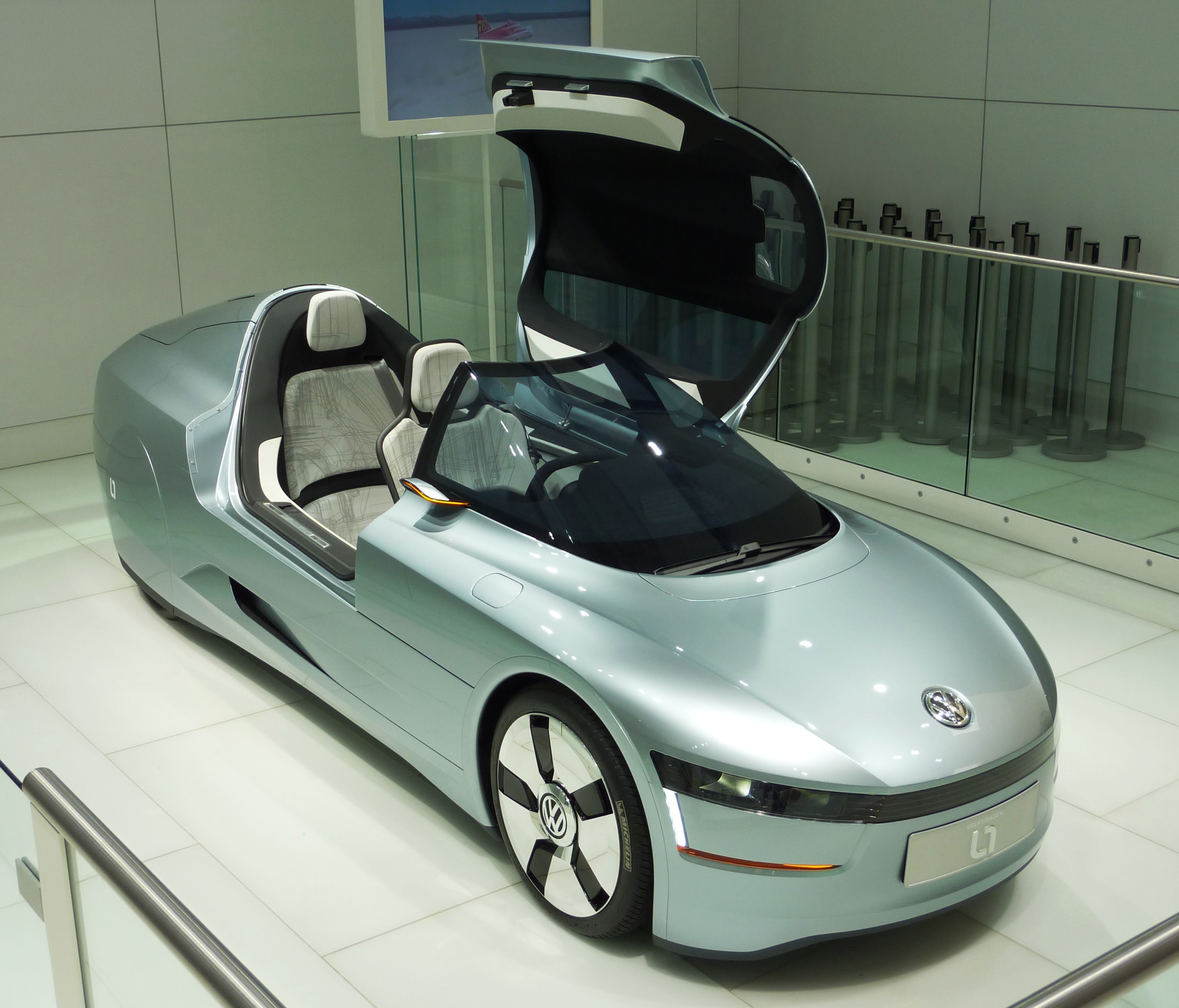
The L1 moved to an 800 cc, two-cylinder TDI, making 39 hp, and moved to a full hybrid configuration with a 14 hp electric motor (I don’t have a combined power figure, and do not just add the electric to the diesel motor power), through a 7-speed DSG. Total drag area went up to 0.199 m2 – so, still, a bit more than 1/3 of a Prius – and weight went up to 381 kg (840 lbs). Fuel consumption increased, however – 1.38 l/100 km, or 170 mpg, and that just wouldn’t do. So, from the company that earned themselves an Ig Nobel for cheating on emissions, comes the product that cheated on hitting a fuel economy goal…
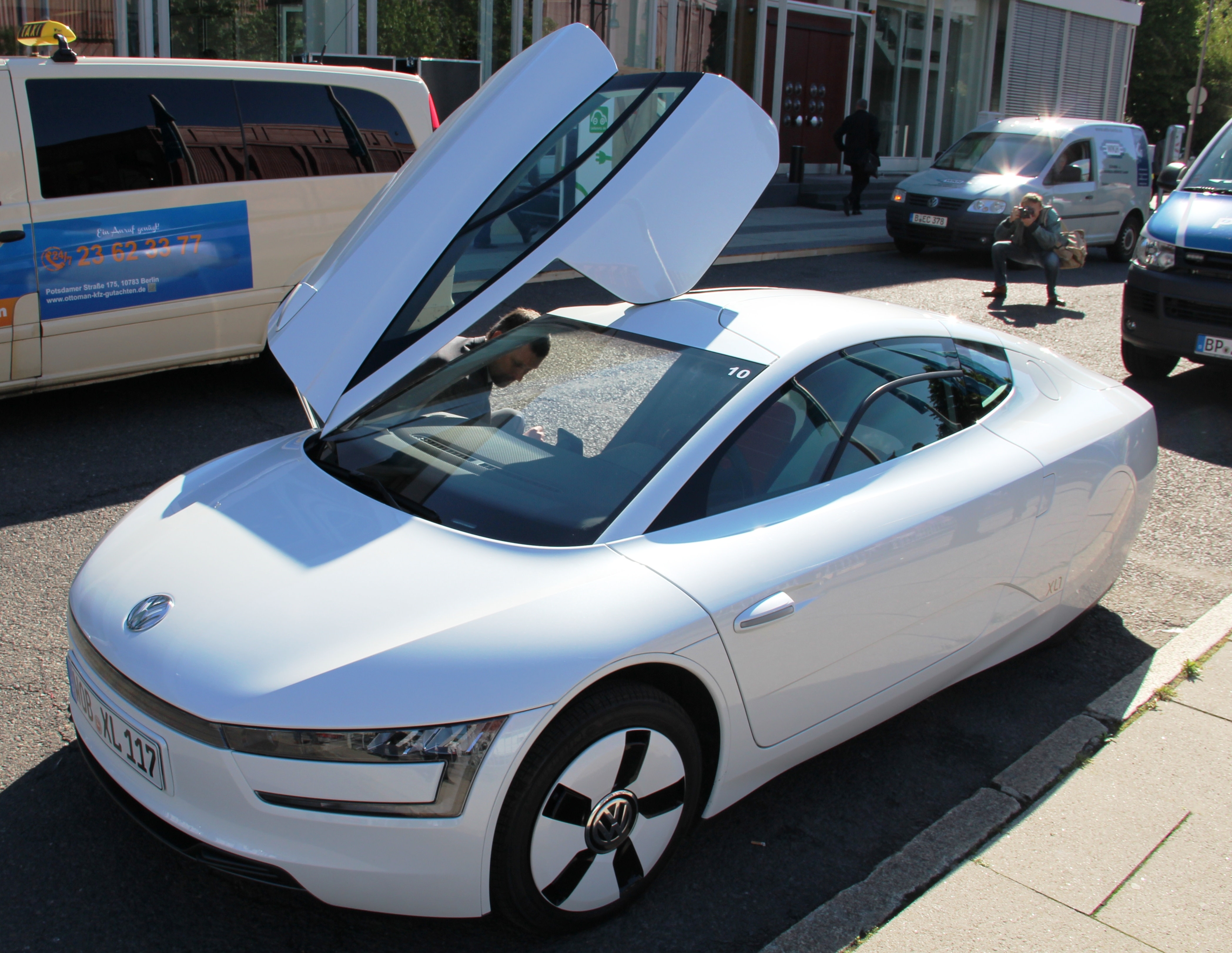
The XL1. It moved to a staggered side-by-side configuration (adding more drag), added more power – 47 hp engine, 27 hp electric motor, producing a combined output of 68 hp – and added a lot more weight (up to 795 kg, or 1753 lbs). Oh, and it also added a 5.5 kWh battery, for plug-in operation, and here’s where the cheat comes in. Volkswagen claimed 0.9 l/100 km, or 261 mpg – far better than the L1, even better than the old 1-Liter-Auto with its 8.5 hp thumper. However, this is a much wider, much heavier car – how can this be possible?
It becomes apparent what happened, though, when you realize how the NEDC test is run on a plug-in hybrid. (We’re going to, of course, othewise ignore the fact that all of this, including the earlier cars’ fuel economy figures, were done on NEDC, a test cycle that’s rather gentle, and easy to game.) The test is run starting with a fully charged battery, and the fuel used during that test is treated as the fuel consumption of the vehicle in all conditions – the electricity is kept track of, but often not reported by manufacturers. Volkswagen’s range estimates, however, give away the real story. They claim 50 km on battery alone, and 500 km on both, with a 10 liter fuel tank. Well, that effectively means 450 km on 10 liters, or 2.22 l/100 km, or about 106 mpg – well over double the fuel consumption that Volkswagen’s claimed.
What I did to try to chase the whale
So, I knew I’d never be able to buy the original concept that I fell in love with. The L1 gave me hope that I’d be able to buy something close enough, but the XL1 dashed those hopes.
Ultimately, I decided that if I wanted it, I’d have to build it. So, that meant that I’d need an engine, for starters… something cheap, small displacement, and diesel. To the List of Craig I went, and I ended up buying this thing:
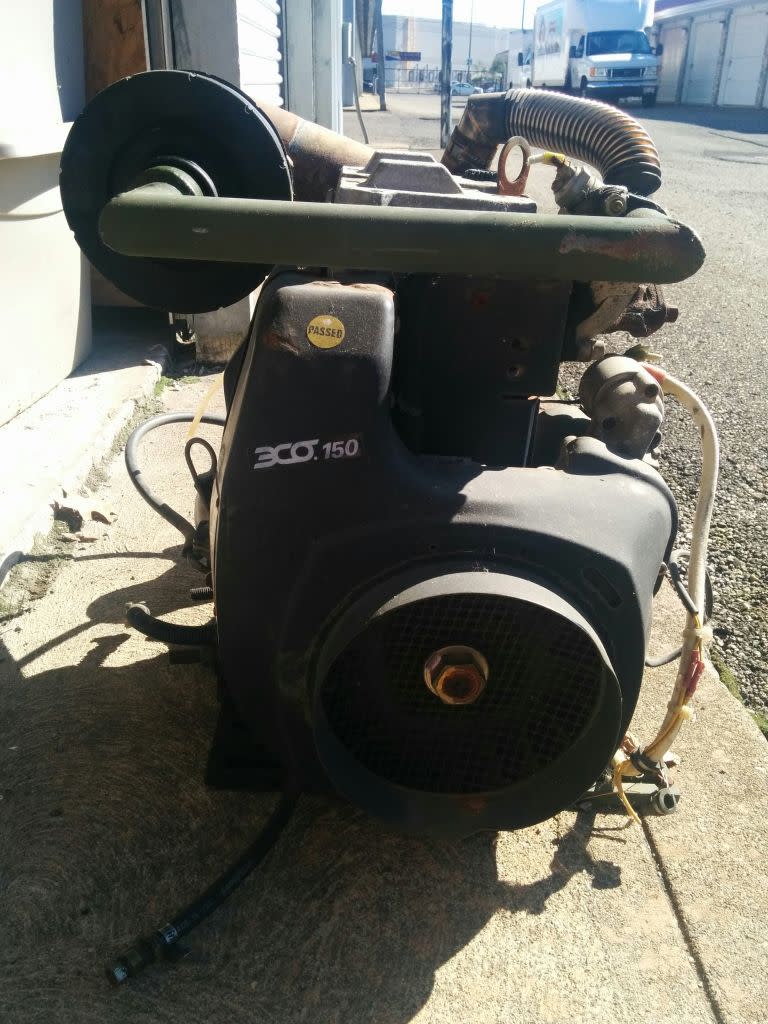
“This thing” being a Ruggerini MD150. It’s a 654 cc, twin-cylinder, direct-injection, aircooled, diesel engine. It’s basically a generator engine, and it produces 12.6 hp @ 3000 RPM… except, that can be improved upon. You see, Ruggerini made another engine, the MD151, which is literally the same engine, but with the rev limiter set higher. It, instead, produces a far more respectable 16.3 hp @ 3600 RPM. (You might notice that 3600 RPM is a very common speed for generator engines – that’s because it divides evenly into 60 Hz. That’s also why the MD150 exists – 3000 RPM divides evenly into 50 Hz.) And, the difference between the two engines? One screw on the fuel system.
I also started looking into things like suspension systems – IIRC, I decided on a massively narrowed VW Type 1 suspension as my best bet for the front, and I had decided that a three-wheeler would get into less legal trouble than a four-wheeler, so it’d be a simple swingarm for that. As far as the driveline, I think I had decided on some sort of aftermarket 6-speed intended for Harley-Davidson applications, because it was either that, or adapting some awful Royal Enfield gearbox to the engine – everything else is unitized.
The problem with all of this, though, is that I live in an apartment. I’ve never welded in my life. And, really, that kinda killed the project.
Upshot? That engine sits in my storage unit, just waiting to be used in something. I haven’t even run it since I bought it.
That said, somewhere along the line, I discovered velomobiles – essentially, human-powered versions of the same concept. I eventually ended up getting a recumbent trike (which, if the cycling infrastructure around here were more conducive to it, I’d ride to work more often than I actually do) to try to get a taste for it on the cheap, without the streamlining:
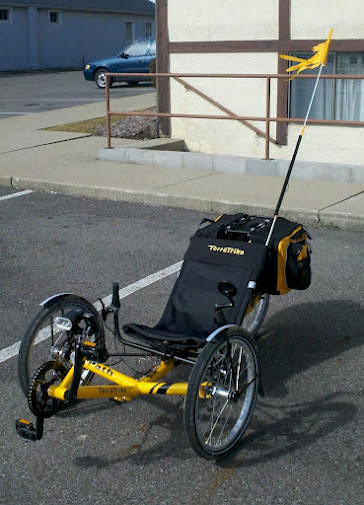
And, ultimately, I would like to build an electric assist velomobile of my own, something in between the European high-performance ultra-streamlined machines like the “insane mystery car” (actually a Milan velomobile) that Jason Torchinsky spotted in a Smart Brabus video, and huge (for something that a human pedals) behemoths like the Organic Transit ELF. However, I don’t think I feel the need to build something freeway capable any more – besides, that’s starting on the hardest mode, anyway.
So, what used to be your white whale, but is no longer?